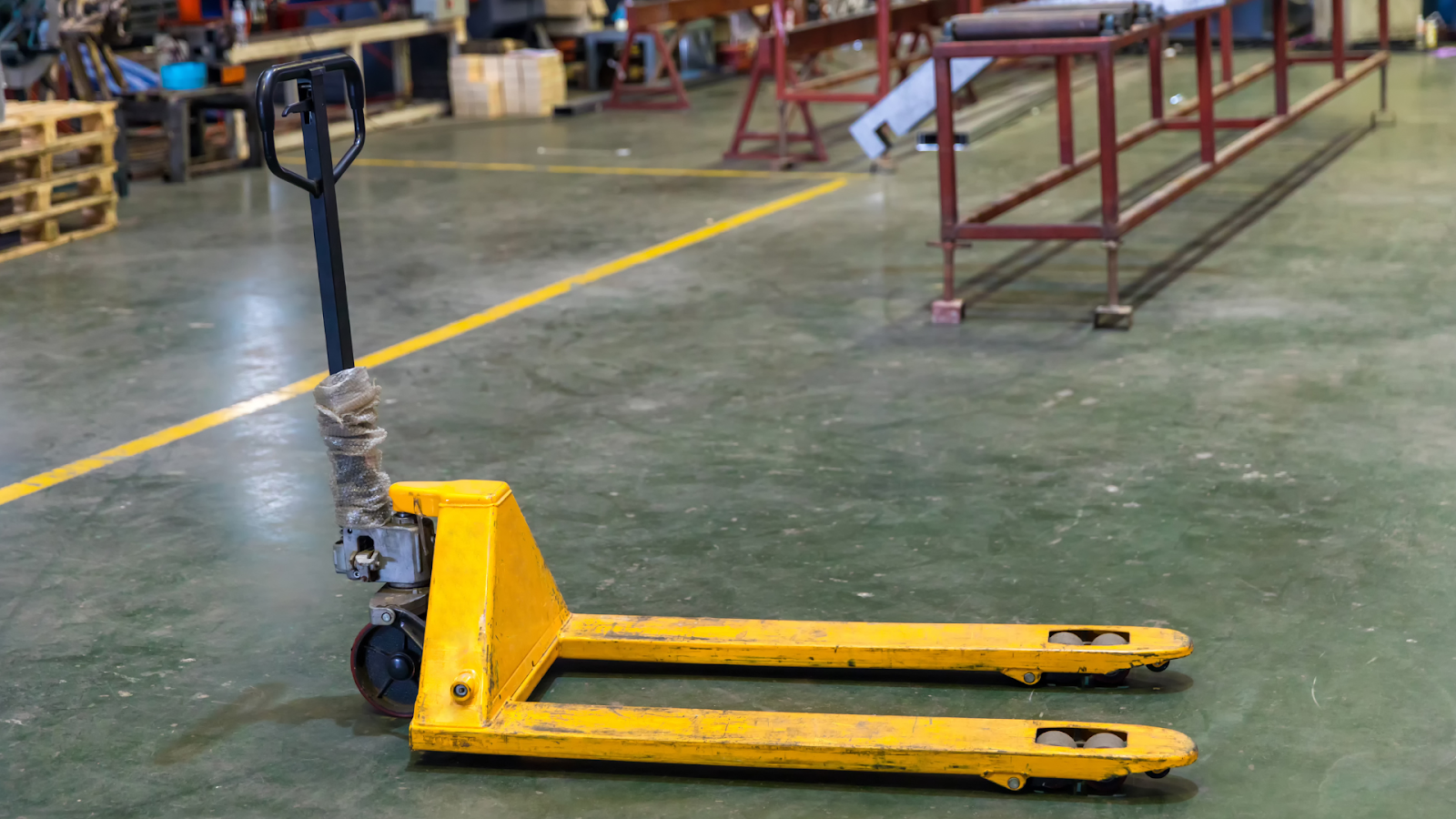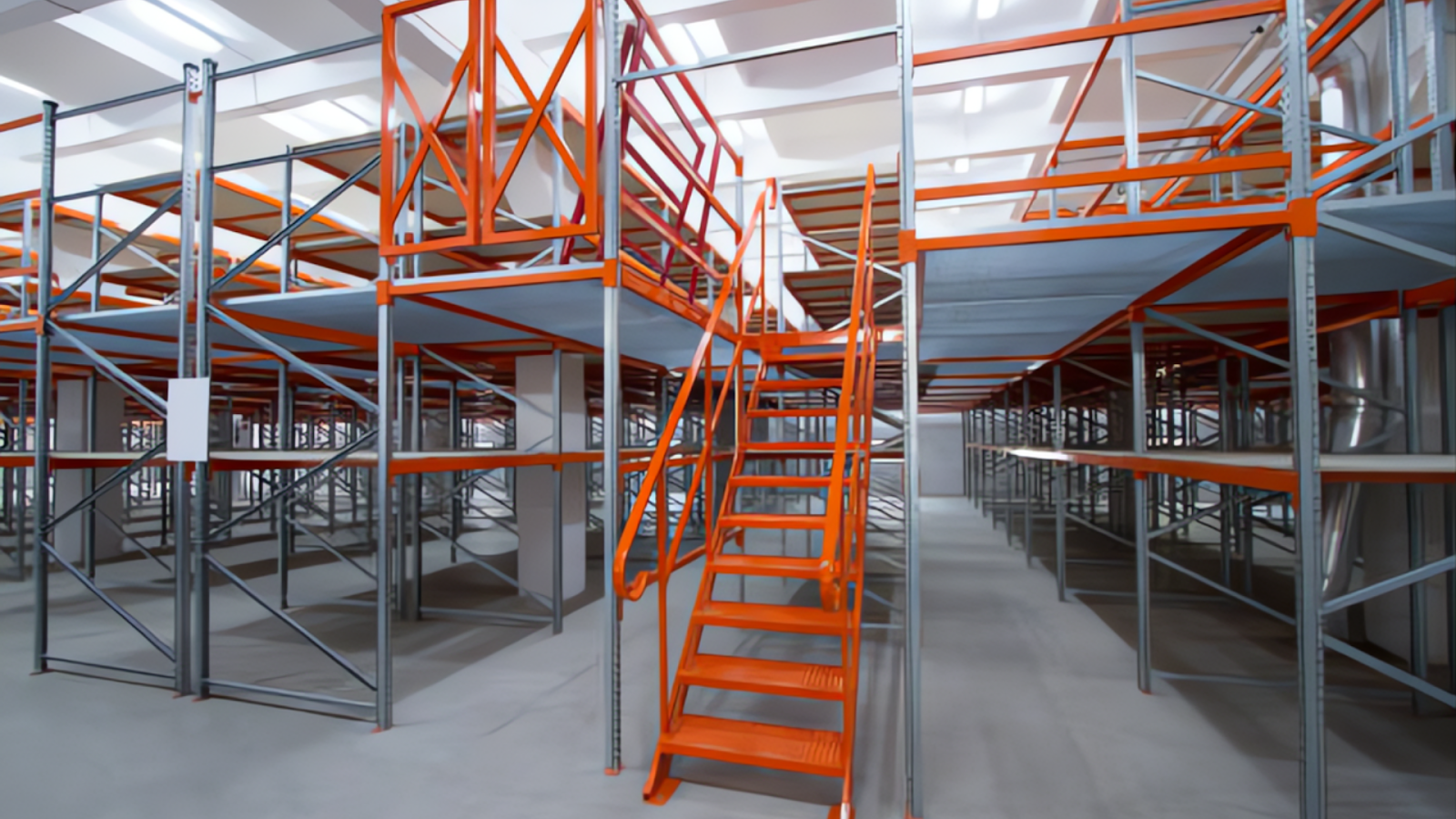Efficient storage is the foundation of every high-performing facility. Be it managing a warehouse, manufacturing plant, or logistics hub, organized storage directly impacts productivity, safety, and profitability.
Most modern warehouses rely on pallet racks with 5–15 ton capacities, valued for their strength, versatility, and cost-effectiveness in handling diverse storage and distribution needs. Poor rack planning, however, leads to wasted space and safety risks, making a well-engineered pallet racking system design essential for performance and compliance.
This guide walks operations and facilities managers through every step of designing pallet racking layouts, from rack selection to OSHA safety standards, to help achieve long-term efficiency and ROI.
A pallet racking system is a structured storage solution that holds palletized goods in horizontal rows across multiple vertical levels. It optimizes warehouse space by using height rather than expanding floor area.
These systems allow forklifts or automated retrieval equipment to store and retrieve pallets efficiently, improving workflow and inventory accessibility.
For procurement and safety officers, pallet racking systems provide both storage density and compliance. When engineered correctly, they reduce clutter, minimize product damage, and enhance throughput while maintaining safety codes.
When precision and protection matter most, Source Equipment delivers proven solutions from Husky Rack & Wire. The Pallet Stop Beam safeguards racks against overhangs and push-through accidents, preserving rack integrity and worker safety. Built from heavy-gauge steel, it’s an essential upgrade for every compliant and efficient storage setup.
Request a quote today to add industrial-grade safety to your pallet racking system.
After defining pallet racking, let’s examine the different rack types available.

Different industries rely on unique pallet racking configurations to balance accessibility, safety, and storage density. Each type has distinct structural characteristics and performance benefits based on product volume, turnover rate, and equipment compatibility.
Selective pallet racks offer direct access to every pallet and remain the most adaptable system for diverse SKUs. Modern designs integrate smart load sensors and IoT monitoring to track beam deflection and prevent overloading. New-generation racks also feature tool-free beam adjustments and powder-coated finishes for corrosion resistance and longevity.
Key Features:
Use Cases:
Technical Specifications:
These high-density systems allow forklifts to enter lanes, minimizing aisles and maximizing cubic space. New drive-in models feature AI-based traffic sensors for forklift navigation and impact-resistant uprights to reduce collision damage. Drive-through variants now integrate automated pallet tracking systems for improved inventory rotation accuracy.
Key Features:
Use Cases:
Technical Specifications:
Push-back racks store multiple pallets on nested carts for compact, efficient storage. Recent advancements include self-lubricating rail systems and real-time load tracking sensors for smoother pallet flow. Future-ready models also support automated guided vehicles (AGVs) and WMS integration for faster, safer inventory management.
Key Features:
Use Cases:
Technical Specifications:
Pallet flow racks use gravity rollers for continuous FIFO movement. New versions come with AI-powered speed controllers that adjust pallet descent automatically based on weight distribution. Advanced systems now feature digital roller health monitoring and predictive maintenance alerts to prevent downtime in high-throughput environments.
Key Features:
Use Cases:
Technical Specifications:
Cantilever racks handle long, bulky materials such as pipes or beams. Modern designs incorporate laser-guided positioning systems for precision loading and adjustable arms with smart locking mechanisms. Some advanced setups also integrate robotic retrieval compatibility for safer, automated handling of oversized materials.
Key Features:
Use Cases:
Technical Specifications:
Double-deep racks maximize density while maintaining moderate selectivity. Future-ready systems now use smart pallet detection sensors to ensure accurate placement and retrieval with deep-reach forklifts. Many warehouses are adopting AI-powered slotting software that analyzes SKU data to optimize double-deep configurations for efficiency and safety.
Key Features:
Use Cases:
Technical Specifications:
Once you select the type, the setup design determines safety and performance.

Creating an efficient rack configuration requires balancing accessibility, safety, and workflow precision. The right configuration ensures faster material handling and maximum use of vertical and floor space.
Separate fast-moving SKUs from slow-moving inventory to reduce congestion. High-turnover goods should stay closer to dispatch areas for quick access. This reduces operator travel time and enhances throughput efficiency.
Maintain aisle spacing suitable for your handling equipment. Standard forklifts require 12–14 feet, while narrow-aisle trucks need about 8–9 feet. Proper aisle planning minimizes collision risks and improves navigation safety.
Coordinate rack spacing with the turning radius and mast height of your forklifts. Seamless integration between racks and equipment reduces accidents and improves material handling efficiency.
Maintain at least 6 inches between pallets and uprights. Adequate clearance prevents contact damage and ensures stable load placement under OSHA standards.
Leave 10–15% of your layout flexible for future automation or product diversification. Scalable rack designs prevent future redesign costs. This forward planning maintains efficiency as your operation grows.
A well-planned configuration reduces bottlenecks, ensures compliance, and maximizes both productivity and safety. However, a proper setup must include protection measures that meet OSHA standards.
Maintaining rack integrity is essential for facility safety and regulatory compliance. Even minor impact damage can lead to catastrophic rack failure if left unaddressed.
Modern racks incorporate impact-resistant steel, locking mechanisms, and smart sensors that detect frame deflection. Keeping inspection logs ensures insurance compliance and builds a culture of proactive safety management.
Optimize safety and compliance with Source Equipment, your trusted distributor for Husky Rack & Wire. Equip your pallet racks with durable Pallet Rack Enclosures that secure high-value inventory, control access, and reduce theft risks. Designed for visibility and airflow, these enclosures ensure OSHA alignment while improving warehouse security.
Explore the full range of enclosures in our partner product catalog.
With compliance in place, let's see the key structural and safety considerations for creating a functional rack design.

Successful pallet rack design requires considering structural, operational, and compliance aspects together. Each factor ensures long-term safety, performance, and scalability.
Thoughtful attention to these factors ensures a resilient, compliant, and high-performing racking system. Once designed, careful installation ensures long-lasting reliability.
Proper installation ensures performance, stability, and long-term compliance. Every stage, from floor alignment to employee training, affects safety and system longevity.
Finally, discover how Source Equipment strengthens your racking layouts with proven partner products.
Designing a pallet racking layout goes beyond structure; it’s about choosing components that enhance safety, accessibility, and performance. Source Equipment, a trusted distributor, partners with leading manufacturers to deliver premium-quality racking accessories and storage solutions for modern warehouses and manufacturing facilities.
Source Equipment helps operations managers strengthen every pallet racking layout with reliable storage accessories. The Stacking and Nesting Pallet Containers enhance load organization, stability, and handling efficiency for warehouses and logistics centers. With easy integration into existing rack systems, they streamline workflows and maximize usable space.
Every warehouse or manufacturing facility depends on effective storage to function smoothly. A well-planned pallet racking system design organizes materials and also drives efficiency, safety, and profitability. By understanding rack types, safety standards, and configuration strategies, operations and facilities managers can create systems that grow with their business.
From structural compliance to automation-ready layouts, investing in the right racking design means fewer bottlenecks, improved worker safety, and a measurable ROI, the true mark of a modern, high-performing facility.
Transform your racking system’s performance with Source Equipment, the leading supplier of Pallet Containers. These containers offer adaptable stacking and nesting capabilities that simplify SKU segregation and speed up material flow. Ideal for manufacturing, retail, and logistics environments, they bring structure and durability to modern warehouse operations.
Connect with Source Equipment to explore partner-brand pallet container options for your next warehouse upgrade.
A well-designed pallet racking layout reduces travel distance and improves picking accuracy. Proper layout planning enhances forklift movement and minimizes congestion. It helps managers store more goods without expanding facilities. Improved visibility supports faster inventory checks and fewer errors. The result is higher throughput and better workforce productivity.
Racking systems should undergo visual inspections weekly and comprehensive structural audits annually. Safety officers should check for frame damage, loose bolts, and deflection. Periodic inspections reduce risks of collapse and downtime. Facilities managers should maintain documented reports to ensure OSHA compliance. Regular maintenance prolongs rack life and maintains workplace safety.
Yes, many modern racks are automation-compatible, supporting conveyors, robotic shuttles, and AS/RS integrations. These systems use sensors and digital load tracking to improve precision. Automated configurations reduce manual handling and enhance throughput consistency. Smart software ensures accurate stock placement and retrieval. This integration delivers measurable ROI and future scalability.
Facilities in seismic zones require reinforced uprights and anchor bolts to meet local codes. Environmental conditions like humidity or temperature extremes demand galvanized or powder-coated finishes. Procurement teams should verify all load ratings and anchoring standards. Engineers must ensure proper floor capacity and vibration resistance. These adaptations improve rack durability and operator safety.
Frequent congestion, damaged uprights, and poor SKU accessibility are key warning signs. If forklifts struggle to maneuver, it may indicate layout inefficiency. Unused vertical space often signals missed capacity opportunities. Increasing product mix or faster turnover also demands reconfiguration. Redesigning improves flow, prevents bottlenecks, and supports expansion goals.




Ready to Upgrade Your Process Operations?